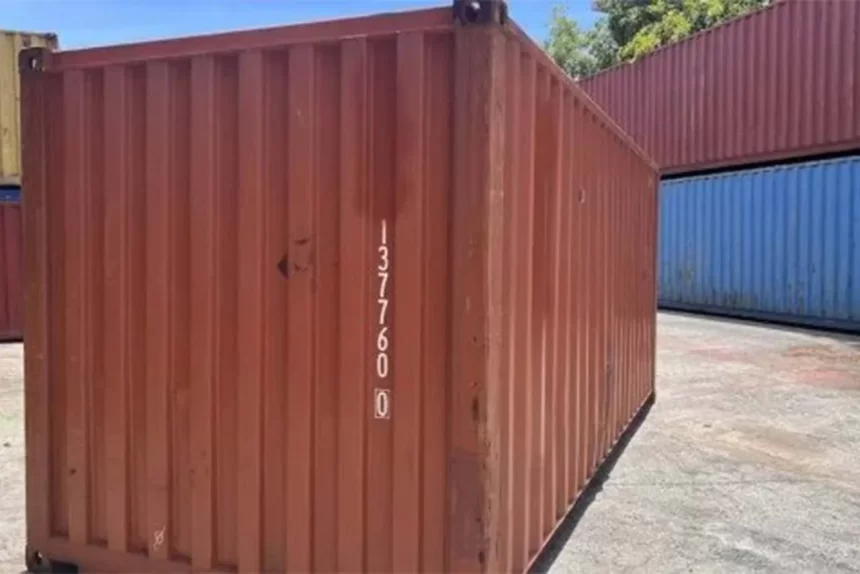Ships have always been used for transportation, but the containers transformed the shipping industry into what it is today. Read on to learn more.
Steel boxes known as shipping containers are used to ship goods all over the world. They are extremely durable due to their strong steel construction, enabling them to withstand lengthy journeys.
Our lives have been profoundly altered by containers in ways that we may not be aware of. Transporting goods by trucks, trains, and ships has become easier thanks to shipping containers. It is safe to say that their invention has revolutionized the transportation sector. They even fastened the process of globalization.
Containers became more standardized, making it easier for them to fit into various storage and transit spaces. This standardization, also known as containerization, dramatically improves efficiency. Today, the majority of industries rely heavily on ocean shipping as part of their supply chain, which makes it the foundation of world trade. According to Statista eighty percent or more of goods are thought to be transported by ships.
Continue reading below to get more information on why containers are important in the shipping industry.
Shipping Trade Before Containers
For thousands of years, the shipping trade provided access to goods for people living in different countries. Our ships may have become larger and faster as technology has advanced. However, loading and unloading cargo in the 1940s was hardly any different from that in antiquity.
Units of measurement, like barrels of wine or sacks of flour, were loaded one at a time. This was known as breakbulk cargo, and it meant longer cargo manifests and more work for port staff and officials.
Additionally, long-term docking of ships carrying cargo also increases the likelihood of theft and other criminal activity.
Introduction of Shipping Containers
With the onset of World War II, the supply of millions of American and allied troops overseas presented new logistical challenges, necessitating the development of creative solutions to support the war effort effectively. Small, uniform boxes filled with war supplies were introduced during this time to boost the American convoys’ ability to deliver essentials for the war effort.
Following the war, Malcom McLean, a trucking entrepreneur, purchased a shipping company and, in 1956, pioneered the practice of transporting product-filled truck trailers that were lifted from truck to ship.
McLean is best known as an American businessman who created the modern intermodal shipping container, which transformed transportation and international trade in the second half of the twentieth century.
By removing the need for repeated handling of individual cargo pieces, containerization significantly decreased the cost of freight transportation. It also increased reliability, decreased cargo theft, and reduced inventory costs by speeding up transit times.
To accommodate the expanding use of containers, the maritime transportation sector as well as the size of ships, trucks, trains, docks, and ports grew and expanded over time. Because handling and transportation costs were reduced, there was a huge boost in international trade as a result of the significant impact on global commerce.
How Exactly Does Cargo Shipping Work?
Cargo shipping operates on a container-based system for the transportation of most goods. In other words, factories or distribution hubs load containers. From then on, they can be transported to a port by truck, rail, or a combination of the two.
Before the entire process is repeated at its destination, the container is transferred from the port onto a ship for the longest leg of the cargo shipping journey—across the ocean. This implies transloading, which involves moving the container back onto a truck, rail, or a combination of both. The goods are then distributed to their final destination, the consumer.
A container ship’s role in the supply chain is primarily to connect the global economy. The primary physical conduit between goods made abroad and their end users is provided by container ships, which transport cargo across oceans.
What Can Be Transported with Containers?
Every year, a wide variety of goods are shipped by sea. Cargo ships are responsible for delivering our most vital goods to us, whether they are common household items or equipment needed on construction sites.
Products shipped by sea fit into one of the following five categories, according to the International Freight Forwarding Association (IFA):
- Roll on/roll off,
- Break bulk,
- Dry bulk,
- Liquid bulk,
- Container cargo.
Roll on/roll off: Project cargo, large machinery, automobiles, and other rolling stock fall under this category. Roll-on/roll-off ports provide a range of specialized services, including second-stage manufacturing, dewaxing, spraying, washing, repairing, and installing air conditioning units, as well as hooks, bumps, and other parts.
Break bulk: Cargo that needs to be loaded one person at a time is referred to as individual or break bulk cargo. Examples of this type of cargo include artwork, furniture, farm equipment, and auto parts.
Break bulk cargo is transported by general cargo ships, where goods are loaded into barrels, drums, crates, and boxes. Break bulk cargo is also shipped using corrugated fiberboard that is military-grade and weather-resistant.
Dry bulk: Dry bulk cargo comprises products like grain, iron ore, sugar, sand, salt, and cement. The two subcategories of dry bulk products are minor and major bulk products. Products like iron ore and coal are in the second category, while fertilizers, minerals, and cement are in the first.
Bulk carriers also transport some hazardous materials, which call for extra precautions to be taken during loading, discharge, and transit. During shipping, extra precautions must be taken, such as visual inspection and moisture content monitoring.
Liquid bulk: Crude oil, gasoline, and fuel oil are examples of hazardous materials that are classified as liquid bulk. Large tankers are used to ship them to refineries and other locations. Petroleum products are shipped using barge-towing trains and tankers, whereas chemical tankers are frequently used to transport goods for the food and chemical industries.
To make sure they adhere to safety regulations, the vessels are regularly inspected and monitored.
Container cargo: Goods like computers, meat, clothing, TVs, and toys are shipped in containers. In order to shield goods from harsh weather, moisture, and temperature fluctuations, they are typically transported in metal-walled containers. Train wagons, barges, and trucks can accommodate containers transported by sea as well.
Why Are Containers Important to the Shipping Industry Today?
Containerization enables containers to be transported anywhere in the world using specialized ships, trucks, or wagons. Each container is assigned a unique identification number as well as a size type code, allowing for efficient tracking and management.
Also, their versatility allows them to transport a wide range of goods. Commodities such as coal or wheat, manufactured goods, automobiles, and refrigerated goods can all be transported by shipping containers with the proper accessories.
The cost of shipments is another significant factor in trade, and containerization allows for lower transport costs with container transportation. Shipping containers are 20 times less expensive to transport goods in than they are through traditional methods. Lower intermodal transport costs are the primary source of containerization’s cost advantages.
When shipping containers are used to transport goods, speed is yet another crucial component. The turnaround times from the ship port have decreased from three weeks to roughly twenty-four hours with the use of shipping containers. This results in faster container-based transport chains. Compared to conventional cargo ships, ships built for shipping containers are faster and have more frequent port calls.
Containers can also be recycled and reused for different purposes, such as offices or housing, even after they are no longer used in the transportation sector.
Join CMG’s Mission to Redefine Containerization
CMG has been on a mission to redefine containerization for more than two decades, beginning in 2003. The company concentrates on the difficult task of delivering the highest quality containers while allowing you to tailor on-the-ground services to your specifications. You will receive sales representative assistance from the start until you receive your container. Contact CMG today!










